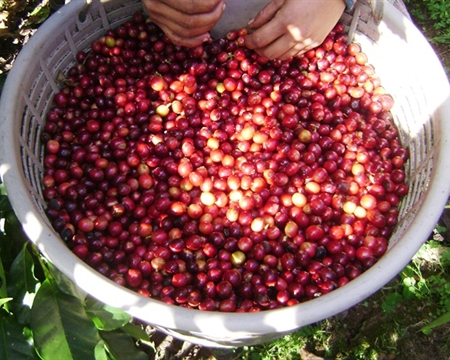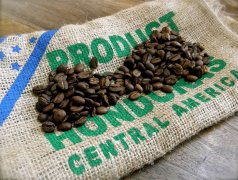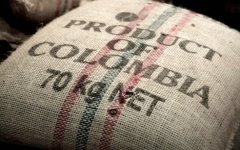Colombia Coffee Cesar Province Bear Processing Farm Origin Information Tibica Washed Coffee Flavor Characteristics

For professional baristas, please follow the coffee workshop (Wechat official account cafe_style)
Product name: Tibica seed washing at Little Bear processing Farm, Cesar, Colombia.
(Colombia Cesar Kuma Tipica Washed)
Production area: Cesar area
Treatment field: bear processing farm (Kuma Mill)
Variety: Tibica
Altitude: average 1800 m
Grade: Nbig A
Treatment method: traditional washing treatment
Harvest time: 30% from April to June
September to January 70%
Certification: NCMA
Flavor description: fresh Chinese fir, spices, cream, toffee
, pecans, dark chocolate, body thick.
Introduction:
The western part of Colombia is the Andes, which is divided into three parts: the west, the central and the
The eastern mountains. The Cauca and Magdalena rivers flow along the Caribbean to the lowland plains.
Colombia is currently the second largest coffee producer in the world, using washing to treat Arabica coffee beans.
It is also one of the largest producers of high-quality coffee in the world.
A nostalgic taste in 1808, coffee was first introduced to Colombia by a priest
Brought by the French Antilles via Venezuela. Today, the country is the third largest coffee producer after Brazil and Vietnam
The annual output is 12 million bags of 60 kg each, while Brazil's annual output is 31 million bags. The coffee is
The status of Colombia can be seen in the following examples: all vehicles entering the country must
Spray disinfection, so as not to inadvertently bring disease and damage to coffee trees. Colombia was the last largest in the world.
Arabica coffee bean exporter is second only to Brazil. Robusta coffee, however, is rarely grown.
Compared with other producing countries, Colombia is more concerned about and developing new varieties and promoting production. That's exactly what it is.
Coupled with its superior geographical environment and climatic conditions, Colombian coffee is of high quality and delicious, and is famous all over the world.
The main producing areas are Huila (San Augustin), Narino, Tolima, Popayan (Cauca),
Valle de Cauca, Meta, Antioquia (Medellin), Magdelena (Sierra Nevada),
Boyaca, Santander (Bucaramanga), etc. About 700 million coffee trees are documented in Colombia.
66% of them are planted in modern plantations, and the rest are planted in traditionally operated plantations.
On a small farm. The main varieties include Kaddura Caturra, Columbia Colombia,
Tibica Tipica, bourbon Bourbon, Elephant Bean Maragogype, and Tabi
Farms and cooperatives across the country, big or small, run by more than 500000 farmers, are distributed in 590 towns across the country.
And 14 major coffee producing areas, a total of 2 million of Colombians depend on coffee cultivation for a living
Contributed 12.5% to the gross domestic product. In the early 1960s coffee produced about 600 kilograms per hectare.
Now it has been raised to about 900kg, and some farms can reach 2500 kg. In Colombia in 1927,
The National Coffee Management Association was established to be responsible for quality supervision. Although the association is a private organization
But it acts on behalf of the government. In addition to organizing the industry, the association is also responsible for the price of coffee
Control and responsible for health care, education, road construction, employment of planting technicians, investigation and supervision of product quality
Directly manage the export business of 50% of the total export volume, hire marketing personnel and other duties.
Like the National Coffee Management Association in Kenya, it is a model for the management of coffee organizations.
The Cubs processing Farm (Kuma Mill) is located in Xisa, southeast of the Magdalena producing area.
(Cesar) the local mountain range, the province of Cesar is located in northern Colombia, with Virienella to the east.
In the border mountains, coffee is grown in Cesar province. The main problem is the local armed conflict.
Coffee farmers often have to flee everywhere. The bear processing farm passes through the local coffee farmers
Form a group with a cooperative nature, with an average of more than 1800 meters, and the variety is Tibica.
Due to the large temperature difference between day and night in the the SierraNevada de Santa Marta Mountains, it is very suitable.
A good place to grow coffee. This micro-batch of Xisa Little Bear processing Farm is washed with Tibica seed.
Flavor description: fresh Chinese fir, spices, cream, toffee
, pecans, dark chocolate, body thick.
Important Notice :
前街咖啡 FrontStreet Coffee has moved to new addredd:
FrontStreet Coffee Address: 315,Donghua East Road,GuangZhou
Tel:020 38364473
- Prev

Introduction to the flavor characteristics of tropical rain forest certified coffee from COE Cup Changshengjun, Honduras-Saint Vincent treatment Plant
For the exchange of professional baristas, please follow the coffee workshop (Wechat official account cafe_style) Product name: Honduras St. Vincent processing Plant Tropical Rainforest Certification SHG (Honduras San Vicente Rain Forest SHG) production area: Santa Barbara (Santa Barbara) Pena Blanca Town processing Plant: St. Vincent processing Plant (Beneficio San Vicente)
- Next

Colombian Coffee Villa Province Timana Cooperative washing Coffee Flavor characteristics Origin Information
For the exchange of professional baristas, please follow the coffee workshop (official account cafe_style of Wechat) Product name: water washing of Timana Cooperative, Villa Province, Colombia (Columbia Huila ASPRO Timana Washed) country: Colombia ((Colombia) production area: Villa Province (Huila), Timana production area producer: ASPRO T
Related
- Does Rose Summer choose Blue, Green or Red? Detailed explanation of Rose Summer Coffee plots and Classification in Panamanian Jade Manor
- What is the difference between the origin, producing area, processing plant, cooperative and manor of coffee beans?
- How fine does the espresso powder fit? how to grind the espresso?
- Sca coffee roasting degree color card coffee roasting degree 8 roasting color values what do you mean?
- The practice of lattes: how to make lattes at home
- Introduction to Indonesian Fine Coffee beans-- Java Coffee producing area of Indonesian Arabica Coffee
- How much will the flavor of light and medium roasted rose summer be expressed? What baking level is rose summer suitable for?
- Introduction to the characteristics of washing, sun-drying or wet-planing coffee commonly used in Mantenin, Indonesia
- Price characteristics of Arabica Coffee Bean Starbucks introduction to Manning Coffee Bean Taste producing area Variety Manor
- What is the authentic Yega flavor? What are the flavor characteristics of the really excellent Yejasuffi coffee beans?

